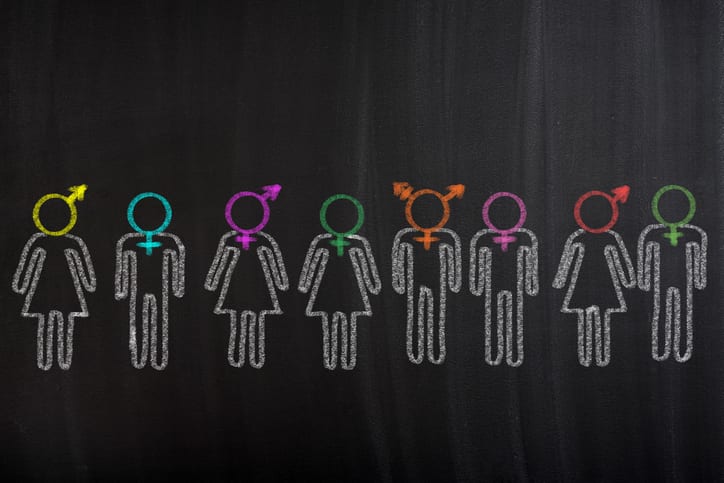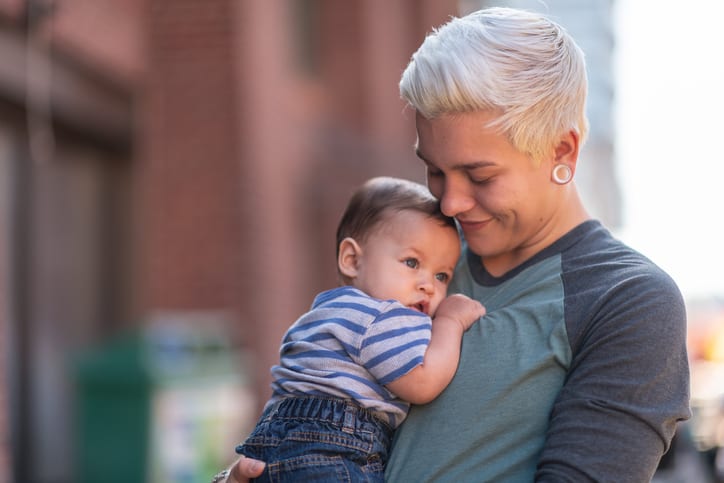Trending Now
Our world is growing and changing, hopefully in ways that make it more inclusive and comfortable for every single person who inhabits it. Most of us want to adapt in order to help make that possible, but the truth is, sometimes we just don’t know the answers to the hard questions – and we’re afraid to ask!
If you’re wondering if the word “androgynous” still has a place in the current lexicon, if it’s the same or different than modern terms like “nonbinary” and “genderfluid,” we’ve got your back.

Image Credit: iStock
Syracuse University professor Rose Bell is someone who identifies as all three of those terms – but points out that’s not true of others who identify with one (or more) of them.
“These are very different; someone can be one of these things without being the others, or they could be all of them! Androgyny can mean a number of things.
I most often hear it used to refer to gender presentation. In this sense, it means someone whose appearance does not fit either masculine or feminine norms – who doesn’t look or dress like a man or a woman.
But some people also identify as androgynous, which isn’t the same as looking androgynous.
And both of these things are different from ‘nonbinary,’ although there is definitely some overlap.”
If someone is “cisgender,” their actual gender is the same one they were assigned at birth. “Transgender” people’s actual gender is different from the one they were assigned at birth. And “nonbinary” individuals experience a gender identity that is neither male nor female.
They may also call themselves gender fluid, agender, a third gender, or some other term that feels more right.
“Nonbinary is an umbrella term that describes anyone who has a gender identity that is not strictly one of the ‘big two’ binary categories.
There are many different identities under that umbrella.
It’s important to remember that not all nonbinary people have androgynous gender presentation!
Nonbinary is about who you are, not about how you look.”
Which is to say, as ever, you can’t judge a book by its cover – or how a person prefers to dress.

Image Credit: iStock
Androgynous people might identify as any gender, or if they’re gender fluid, that might change from day-to-day.
Physical androgyny has had fairly good media representation since the 1970s and 1980s, when people like David Bowie and Annie Lennox defied gender norms in front of cameras.

Image Credit: iStock
Scott Barry Kaufman wrote a piece about the difference between physical and psychological androgyny in Scientific American.
“Physical androgyny was creative in the ’80s because it was actually innovative. It did challenge gender stereotypes. It got people to think differently about stereotypical male and female roles.
It wasn’t the superficial physical aspects of androgyny that made it so creative, it was the psychological aspects that it represented.”
Psychological androgyny is defined as crossing “sex typed standards of desirable behavior.”

Image Credit: iStock
Bell reminds us that representation continues to matter, and that we’re not done until every single person can look to some form of media and see themselves there.
“Androgyny as a presentation isn’t always connected to gender identity. Many people who are nonbinary also look androgynous. But not everyone.
And the opposite is also true; not everyone who appears androgynous is nonbinary. A nonbinary gender identity can be a very personal thing — you don’t always have to wear it on the outside.
There should be space to be whoever you really are. I want people not to expect things from me based on what they think my gender is and putting ‘nonbinary’ or ‘androgynous’ in a box is just another way of doing that.”
I would hope that, wherever you fall on the gender spectrum, however you choose to embrace and display your gender through your clothing and behaviors, you could find a way to feel comfortable in your skin.
Everyone being understanding, being willing and open to learning more, and supporting representation in media, will go a long way toward making utopia a reality.






